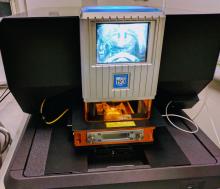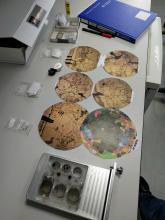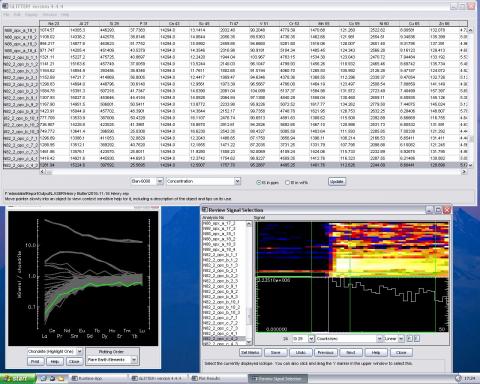Description of the NWR193 LA system used with the Nexion 350D ICP-MS
We have an ESI NWR193 Laser Ablation system interfaced to the Nexion ICP-MS for direct solid sampling. This is mainly a microanalysis technique but may also be used for bulk sample analysis.

We use this system for the in-situ analysis of trace and rare earth elements in minerals such as garnets, cpx, olivine, opx, and other silicates and some carbonates. Also, the high performance cell design and laser delivery options allow for high quality trace element maps to be generated.
Major element composition is used as internal standard for concentration determinations, so samples are usually analysed first by the electron probe though this can be done after LA-ICP-MS.
Whenever possible, sections of samples should be prepared 100 micron thick compared to normal thin sections which may only be 30 micron. The size of the glass slide should be 46-48mm long x 25-30 mm width and also conveniently fits the sample holder for the electron probe. Separated grains may be mounted and polished in an epoxy resin block 25 mm in diameter.
Any graphite coating (for probe analysis) should be removed prior to ICP-MS analysis by gentle polishing with a fine diamond paste, rinsed clean and dried.

Finding specific spots to analyse on the LA-ICP-MS can be time-consuming: users are strongly encouraged to bring along printouts of sample 'maps'. Small marks can also be made on the edges of the slide to help locate target points. Please also be aware the microscope on the laser is not equivalent to dedicated petrological microscopes.
We use Glitter software (GEMOC, Australia) for data reduction of LA-ICP-MS data. Iolite software is also available particularly for Laser Ablation mapping applications (trace elemental mapping). See the screenshot below for an illustration of Glitter, which makes data processing very efficient and powerful.

